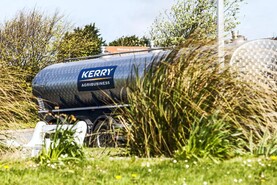Irish meat factories and a number of dairies were in the money this week with the Government announcement of a €70m pot of money that is, in the main, targeted to upgrade processing facilities and diversify markets in the post-Brexit era.
Of course, dairy, pig and sheepmeat are already well diversified and it is only beef and to a lesser extent cheddar cheese that are particularly dependent on the British market.
Even with beef, there has been more business done with the EU 27 than in the previous two years.
What will we be processing?
This investment in processing comes against a background where there has to be doubts in sustained raw material supply coming off Irish farms.
The dairy sector has probably the best prospects given the strong global demand for dairy products and Ireland’s competitiveness in production. Sheepmeat also is in huge demand in EU markets as production declines in the UK and Australia and New Zealand focus on Asian and North American markets.
That dynamic could change with Australia’s free trade deal with the UK but that will take a couple of years before it starts taking effect.
Beef
That leaves beef. Commercially it is the most vulnerable and it has traditionally been the largest recipient of EU CAP support.
In the next CAP, this will be reduced in many cases through convergence, front loading and eco schemes as for every winner there will also be losers.
With beef production being financially the weakest, this makes the sector most vulnerable in the years ahead
Then there is the question of the emission reduction targets for agriculture. These have to be delivered and with less financial support, a need to increase organic and forestry plantation alongside the rewetting of grassland, there simply isn’t going to be the capacity to maintain existing cattle numbers.
With beef production being financially the weakest, this makes the sector most vulnerable in the years ahead.
Different Irish beef industry by end of decade
Against this background, factories are committing to a €266m investment programme with €70m coming from the Brexit Adjustment Reserve money. The dairy portion of this is likely to be OK, but there has to be a question mark over quality Irish beef in the coming years.
We are committed to pursuing a PGI for grass-fed beef and the reality is that by the end of this decade, the biggest portion of beef going through the factories will originate from the dairy herd.
Beef-producing and processing purists will bemoan the decline of the high-quality beef volumes coming from Ireland
In one way, this may well fit the market agenda. With the UK opening its doors to Australian and New Zealand supplies and the EU doing similar with Mercosur, the UK and EU steakmeat market is likely to follow the forequarter burger market and function at global prices instead of the traditional European premium.
Irish forequarter manufacturing beef currently competes at a global level and more dairy product in the mix can be accommodated in this market.
Beef-producing and processing purists will bemoan the decline of the high-quality beef volumes coming from Ireland but it is an inevitable consequence of Irish Government and EU policy on climate, trade and wider industry support.






 This is a subscriber-only article
This is a subscriber-only article










SHARING OPTIONS: